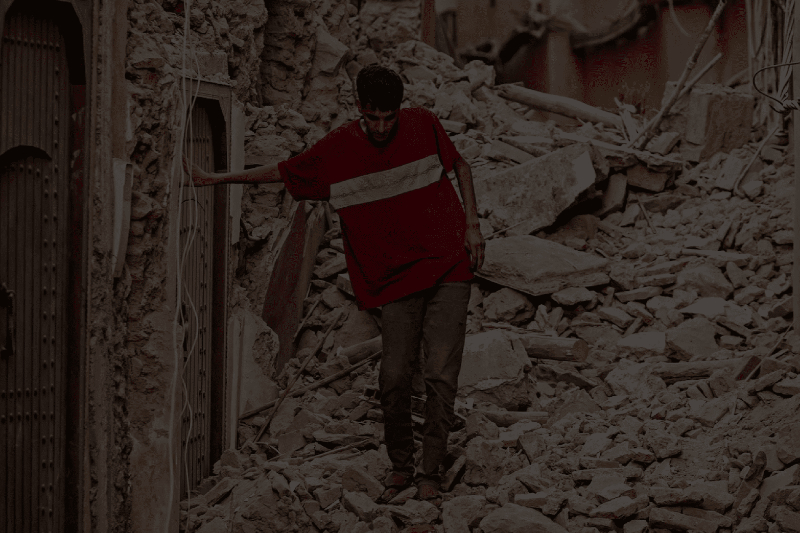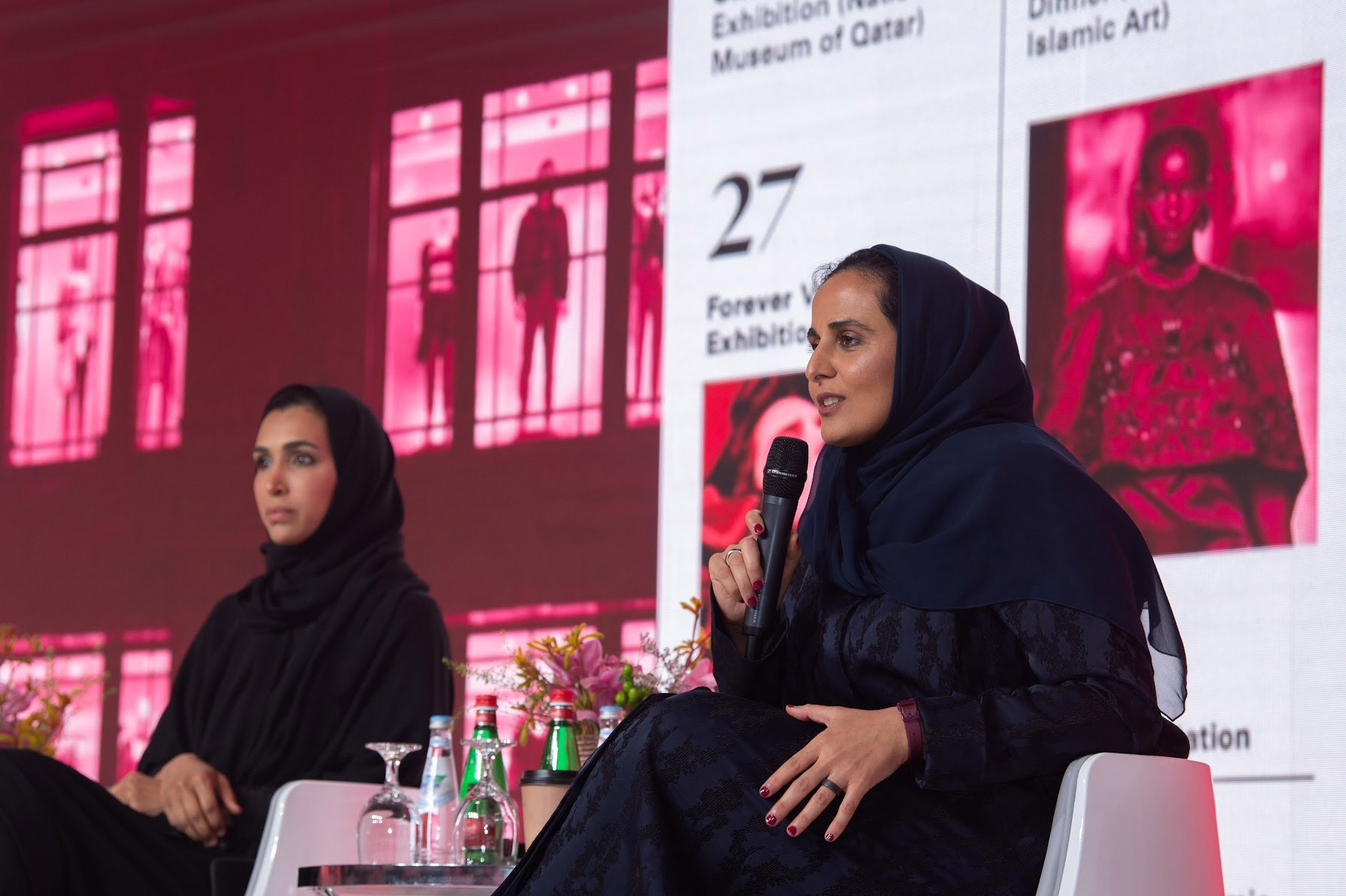As the sister of the Emir of Qatar Sheikh Tamim Ben Hamad Al-Thani and chairwoman of Qatar Museums, at only 40 years old, Sheikha Al Mayassa is regarded as one of the most influential people in contemporary art and one of the most powerful women in the world according to Forbes. The « culture queen », as some media call her, embodies the small emirate’s active soft power strategy.
She has the confidence of a princess but not the exuberance one could expect. Her Excellency Sheikha Al Mayassa enters unnoticed the auditorium of the recently refurbished Museum of Islamic Art in Doha to participate to an « Art for Tomorrow talk » curated by The New York Times and the Democracy and Culture Foundation. No protocole or big ceremonial, sobriety is in order. She wears a navy abaya, designer sneakers, and little to no make-up. Sheikha Al Mayassa shakes hands and acts friendly. Despite her status, she is smiling and relaxed but quickly shows that she has a real hands-on approach. The way she talks in details about the projects handled by Qatar Museums shows her level of commitment. Although she studied international affairs and political sciences at the University of Duke in the US then Sciences Po in Paris, she takes her role as a « facilitator » very seriously and does not behave like an honorary representative of her institution. In a CNN interview, the princess precisely explained : « I am not an expert or an art historian. I like the collaborative efforts between the curators, the artists, us, the government. I am always learning new things, discovering new ideas and developing communities in the public space and public domain ». As when the New York Times journalist tries to corner her with a delicate question regarding the World Cup, she replies bluntly : « we make mistakes, we fix them, we move forward ». A moto she learnt from her father and previous Emir, Hamad ben Khalifa Al Thani who appointed her head of Qatar Museums. The combination of humility and fieriness in her tone translates the state of mind of the princess who also follows the footsteps of her mother, Sheikha Mozah, with whom she also runs the Qatar Foundation for education and research and Fashion Trust Arabia, an incubator for the fashion talents in the region.
In this family often compared to the Medicis, the princess acts like a major pivot between the institution and the public. She is dedicated to the cultural development of her country, to both value the bedouin heritage but also open Qatar to the world, proving the modernity of the Middle East and Islam. A big challenge and a delicate balance for a little emirate composed by 90% of expats. Without proselytism, the goal is rather to open a dialogue between cultures and offer a real freedom of expression to international artists such as the controversial Damian Hirst or Jeff Koons, as long as they respect the Qatari traditions and mindset. Although Her Highness explains that she does not intend on copying or simply importing Western art, rumor has it that Qatar Museums would have a yearly acquisition budget of a billion dollars and that in 2015, they would have acquired the Paul Gauguin painting « When will you marry » for a historical record of 300 million dollars, adding to a collection of Cezanne, Warhol, Rothko, Francis Bacon,… But the royal family remains very discreet and secretive, urging people not the trust everything they read in the media but rather to visit the exhibition that actually account for their collection. Ultimately, their strategy goes beyond their financial power to extend the influence and independence of the small emirate in a tormented region as Doha is on the verge of becoming the new hub of the global contemporary art scene. As a matter of fact, in a context where 60% the population is under 30, Sheikha Al Mayassa regards culture as an informal mean of education, offering an unlimited field of exploration. Exposing children to art, starting with her own, is for her a major factor in the construction of a critical mind and the advocacy for tolerance. Eventually, between excess and lightheartedness, Qatar promotes a desacralized relationship to art and a forward-looking vision.
Chama Tahiri



